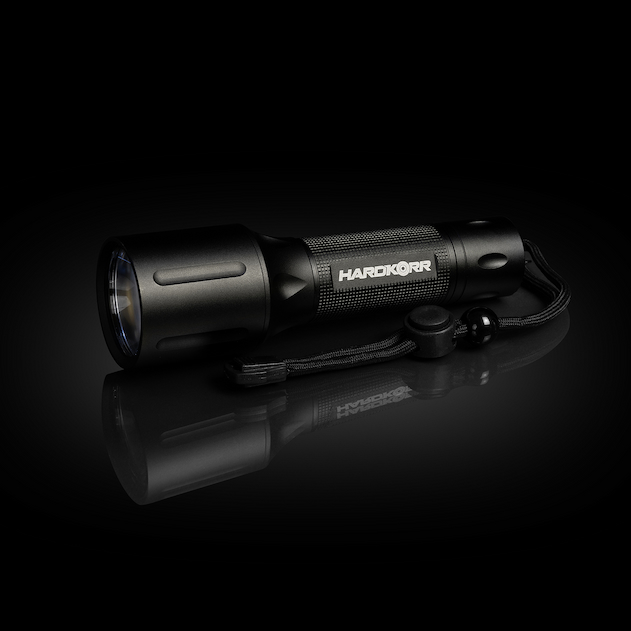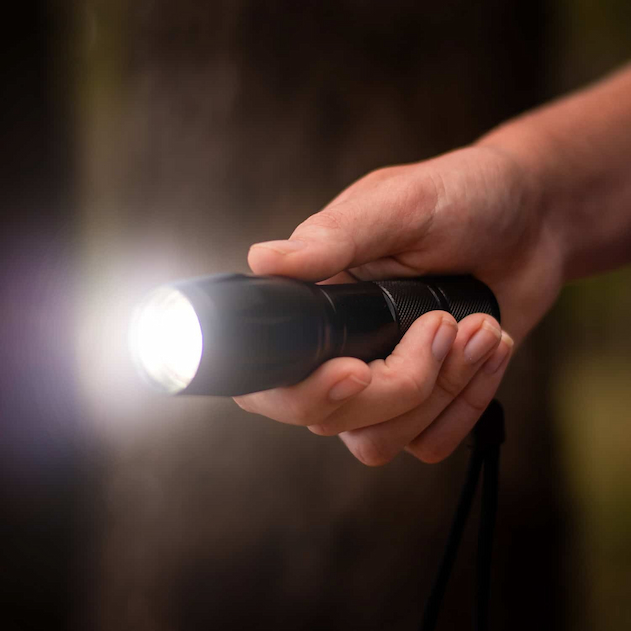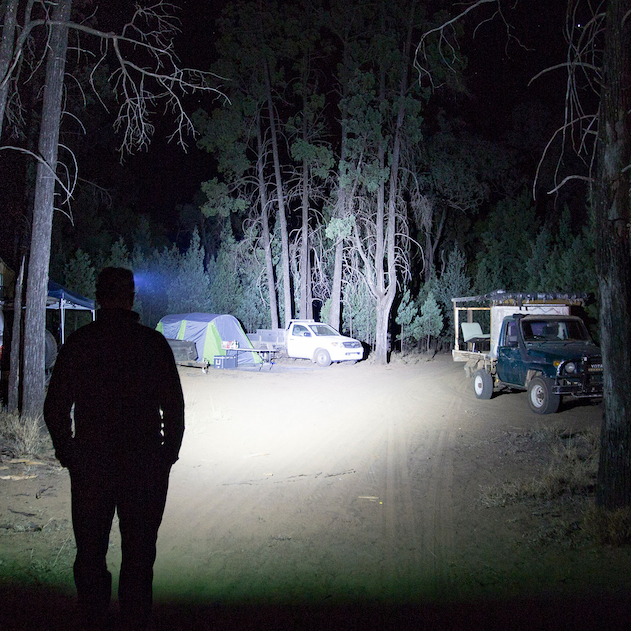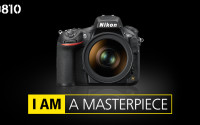LED Torches: Choosing the Ideal Light for Your Needs
Whether you are an avid camper, trail-runner, hunter or a tracker, you need something to illuminate your path in the dark. The story of LED flashlights is already known but let’s share some more light on their most important features that will help you choose the best light for your night-time adventures.
Types of LED Torches: What You Can Use Them For

There are different types of high quality LED torches that vary in size, form and usage. Some are made for specific uses while others can be used in common everyday situations. Here is a list of the most popular types:
Standard Everyday Torches
We all keep one of these in the kitchen drawer, as part of the emergency preparedness kit, or hung up in the garage. They are our first aid in the case of a power outage or if we need to find something in the dark.
Tactical lights
These are specifically made to be used with firearms to illuminate the target, allowing the user to aim in the right direction. Handheld or mounted on the weapon in various sizes and forms, they direct the light beam parallel to the bore and are used by law enforcement agents, soldiers and hunters.
Head torches
Lightweight and powered with rechargeable batteries, they are worn around the head and used for all kinds of activities. Essential for outdoor enthusiasts like hikers, bikers, and campers, they provide light in all low-light and dark environments. On miners’ helmet at the depths of the earth, or at home for cleaning or working on DIY projects, a led headlamp is the perfect choice for jobs where you need light and two free hands.
Waterproof torches
These lights can be submerged into water without any negative consequences. They are more expensive and some types are made of materials that float in the water.
Rechargeable torches
In essence all LED torches are divided into two categories, rechargeable and non-rechargeable. The first are more eco-friendly and can be recharged via USB connection or a manual charger, while the second require constant supply of new batteries which means additional expenses.
Safety Light Glow Sticks
The glow sticks can produce the light by a chemical reaction or by battery powered LED lights. Coming in all sorts of sizes and colours, they can be used as a part of your emergency kits, or exciting lighting decorations for your glow parties.
Penlights
Tiny and built for precision, these LED torches resemble a pen and are made to be used by health professionals to check your eyes, ears or throat, engineers, and anyone who needs a reliable pocket-sized targeted led torch light.
Keyring torches
Also known as keychain torches, they can be used for walking in the dark, unlocking your door, or in any outdoor activities where you need some light. Easily attached to a handbag, keyring, or a rucksack, they can be a great, useful gift for a friend, and ideal for your children’s tiny hands.
How to Choose the Right Light Torch for Your Needs?

In order to make the perfect choice, you will have to consider your specific needs and then pick the type with suitable features. All LED lights are tested and rated following the ANSI FL1 standards from 2009, and the list below gives you the performances which are usually provided by the manufacturer on the packaging.
Light Output
Also known as brightness, it is measured in lumens and gives the total amount of visible light produced by the light source. To illustrate this for example, brightness of 0.5 – 20 lumens is enough to find your way in the dark, 20 – 35 lumens is enough for general use in the house, while 35-100 lumens can be used for different outdoor activities like camping, hiking, or hunting.
Beam Distance
It shows how far the beam of light reaches until it diminishes to the equivalent of a full moon light, which is considered adequate for safe travel at night. The beam distance is a vital feature for long-range visibility.
Beam Pattern
It is measured in metres and defines how the light is spread. There are a few standard beam patterns: spotlight which is a focused narrow beam, flood light which has wide light distribution, and adjustable light, where you can switch between different options and light modes.
Beam Colour
The white is the brilliant light for everyday use, the red is to protect your night vision when you travel in the dark, and the green doesn’t scare the fish, or the wild game. NVG – Night Vision Green is for military pilots who fly with specialized equipment, while blue LEDs, other than being crucial in fog headlights, are used by the police for blood and other bodily fluids detection.
Ultraviolet-UV lights serve for money and document authentication by making the watermark fluoresce. They are also used in crime scenes investigations, pest detection and mineralogy. Finally, infrared LED lights are utilized for hunting and tracking and in specialized night vision IR equipment which illuminates the subject without revealing hunters’ location.
Run Time

Measured in hours, it defines how long the LED light will operate continuously on a fully charged re-chargeable battery or a single set of batteries. The runtime can be different on different brightness levels and this information should be supplied by the manufacturer.
Impact Resistance
It shows how many times the torch can drop and not suffer any damages if impact tested. Normally torches have been dropped six times onto concrete at rated distances. If you need a torch that will be used in robust and harsh environments, look for one with higher impact rating than standard ones.
Regulated Output
The regulated power supply will give a steady brightness level until the battery gets empty, while non-regulated will start strong and then progressively grow dimmer.
IP Rating
Short for Ingress Protection Rating, it determines the rate of protection provided by the enclosure from the intrusion of external dirt, dust or liquids. The additional IPX system here, defines the levels of:
Water Resistance
This is important if the torch is used outside in different weather conditions. The ratings go from 1 to 8, where IPX4, for example, means that the torch is splash resistant from all sides, IPX7 that it can stand a temporary immersion of up to 30 minutes at 1m depth and the highest rating, IPX8, that the torch is resistant to a submersion of up to 4 hours at specified depth.
The key factors when choosing a LED torch are the light output, battery type, run time, size, and weight. The rechargeable light torches with inbuilt lithium-ion batteries are pricier but highly recommendable because they lower the additional costs and protect the environment. Also, torches with options for different light settings will cover multiple uses and save battery life. There are so many good brands so read the reviews, the warranties and FAQs, and find your best friend for your next camping adventure.



